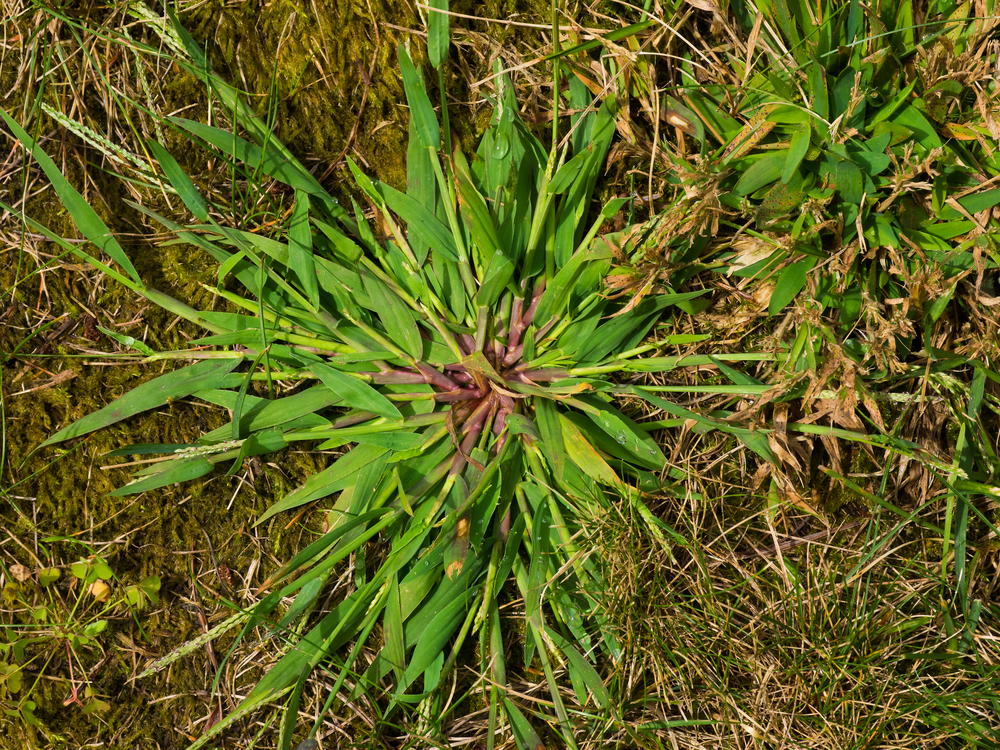
Crabgrass — the bane of every homeowner’s existence. This annual grassy weed sprouts relentlessly in warm weather, stealing precious nutrients and water from your lawn. It is easily recognizable by its light green blades that sprawl from a central root, often forming a crab-like shape (hence the name). While this weed may look harmless at first, its shallow roots and sprawling growth create an unsightly mess and harm your lawn’s health. The good news? It’s entirely possible to kill crabgrass and prevent it from making an unwelcome return.
The Ugly Truth of Crabgrass Growth
Crabgrass does not simply turn a beautiful lawn into an eyesore; it also poses several threats to your lawn’s health:
- Competition: Crabgrass aggressively competes with your grass for water, sunlight, and nutrients, hindering its growth and overall health.
- Moisture Loss: Crabgrass dries out quickly, leading to increased water evaporation from the soil, which can stress your lawn, especially during hot summers.
- Thatch Buildup: Dead crabgrass creates a layer of thatch, a barrier that prevents water and nutrients from reaching the roots of your grass.
The Crabgrass Cycle
To effectively get rid of crabgrass, it’s essential to understand its life cycle. Crabgrass thrives in warm weather, typically germinating in early spring from seeds that lay dormant in the soil throughout the winter. These seeds germinate readily in bare patches, exposed soil, or areas where your grass is thin or weak.
As the weather warms, crabgrass plants grow rapidly, forming low-growing clumps. They typically produce seeds in late summer or early fall. These seeds then fall back to the soil, ready to germinate again the following spring, perpetuating the cycle.
How to Get Rid of Crabgrass & Take Back Your Lawn
Once you’ve determined that crabgrass is taking over your outdoor space, you have two main options for eliminating it:
Pull the Plant by Hand
For small patches of crabgrass, pulling them out by hand is an effective solution. Make sure you remove the entire plant, including the roots, to prevent regrowth. This method is best suited for early infestations before the crabgrass has produced seeds.
Post-Emergent Herbicide Application
For more widespread infestations, herbicides designed to target crabgrass while leaving your grass unharmed are a good option. Read and follow the instructions on the post-emergent herbicide label carefully to ensure safe and effective application. Keep these other tips in mind as well:
- Apply at the Right Time: Most crabgrass herbicides are most effective when applied in early spring, before crabgrass seeds germinate.
- Target Actively Growing Crabgrass: The herbicide works best when crabgrass is actively growing, typically when temperatures are consistently between 60°F and 90°F.
- Water After Application (if required): Some herbicides require watering after application to activate the product. Refer to the specific instructions on the label.
- Don’t Apply to Newly Seeded Lawns: Make sure you don’t apply herbicides to a newly seeded lawn or garden.
How to Prevent Crabgrass From Growing in the Future
While it’s possible to kill crabgrass that has already overtaken your lawn, the best defense against this pesky weed is to take a proactive approach. You can prevent crabgrass from growing back by following these tips:
- Thicken Your Lawn: A dense, healthy lawn with thick turf shades the soil, making it less hospitable for crabgrass seed germination. Regular seeding and overseeding in thin areas will help achieve this.
- Maintain Proper Mowing Height: Mowing your lawn at the recommended height for your grass type helps it grow thick and healthy, discouraging crabgrass seeds from germinating.
- Practice Good Watering Habits: Water your lawn deeply and infrequently, encouraging your grass to develop deeper root systems that can compete more effectively with crabgrass.
- Apply a Pre-Emergent Herbicide: Pre-emergent herbicides act as a barrier against crabgrass seeds and prevent them from germinating in the first place. Apply these herbicides in early spring for the best results.
Let Our Professionals Protect Your Lawn From Crabgrass
While DIY methods can be effective at killing and preventing crabgrass, they also come with potential risks. Improper application of herbicides can damage your lawn, harm surrounding plants and flower beds, and even contaminate water sources if not done correctly. Instead of spending your weekend battling crabgrass, turn to the experts at Lawn Specialties.
Our experienced lawn care professionals have the expertise and knowledge to safely and effectively eliminate crabgrass and prevent future infestations. We use professional-grade products specifically formulated for optimal results while minimizing environmental impact. Contact us today for a consultation on a weed control service and enjoy a beautiful, crabgrass-free lawn all season long!

